Step-by-Step Guide on How to Use the Critical Path Method in Construction
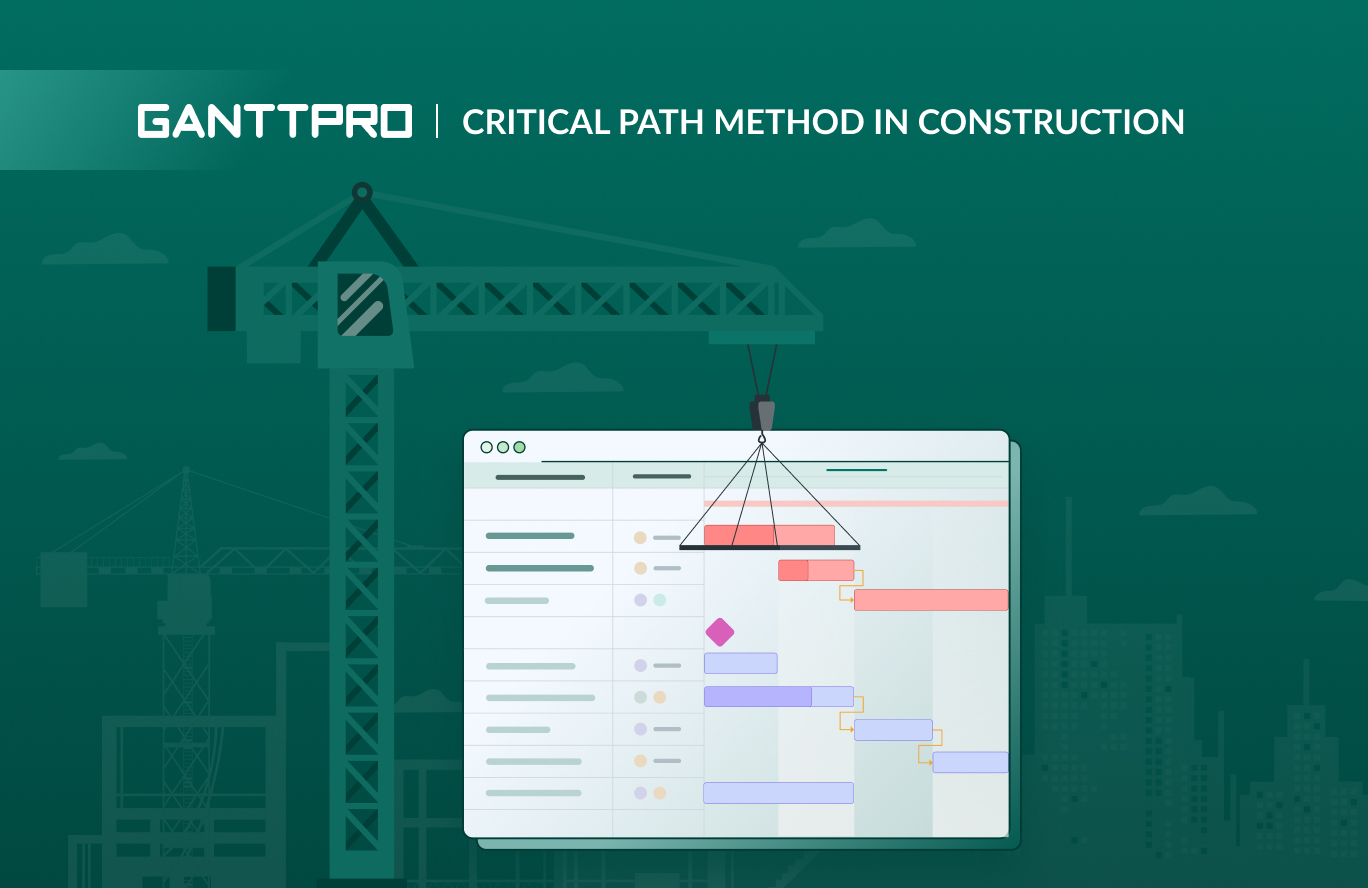
Audio version:
Most construction projects involve complex and interconnected tasks. No matter if you build a small garage or a huge multifunctional residential complex.
It is crucial to complete work on time with proper documentation and record-keeping. Therefore, professionals use the critical path method in construction. It ensures accurate project planning and leads to guaranteed results on any construction site.
In this article, we’ll take a closer look at the importance and power of the critical path method in one of the most complex and fastest-growing industries.
To make the theory clearer, we’ll show the usage of CPM in construction with a convenient PM tool that allows for visualizing a Gantt chart critical path.
Contents:
- What is a critical path method in construction?
- Why is the CPM method so well suited for construction?
- How is CPM used in optimizing time in construction?
- How to create a critical path in construction.
What is a critical path method in construction?
A critical path method (CPM) in construction is a project management technique for scheduling and managing complex projects. It identifies the sequential tasks necessary for timely project completion, prioritizes them, and helps allocate resources efficiently.
The CPM approach is highly appreciated by construction project managers. They have to grasp this method for getting professional certification and career advancement.
Here’s what Radek Makar, the planning director at Viviad, the independent construction consultancy firm, says about the method:
Critical path method has embedded itself firmly in the theory and practice of project management. It is widely adopted at all stages of the project lifecycle. You can see how it is used to support tendering efforts, on-site to manage the works, and in commercial discussions surrounding obligations and entitlement.
In project disputes, CPM serves as a legal standard to assess project delays and frequently forms the foundation for financial claims in court.
Why is the CPM method so well suited for construction?
The critical path method was developed in the late 1950s. Its authors, Morgan R. Walker and James E. Kelley Jr. were looking for a way to manage their complicated construction projects.
The method quickly gained popularity and was soon adopted by many companies and industries including product development, engineering, aerospace, manufacturing project management, and more. One of the first known examples of this method’s usage was the construction of the former World Trade Center Twin Towers in New York.
At the same time, the Program Evaluation and Review Technique, often associated with CPM, was developed. Since then, the critical path method and a PERT chart in project management have often overlapped.
Now CPM in construction project management is highly advantageous for several reasons.
Below are the most essential benefits of CPM as well as the factors that make the method suitable for construction projects.
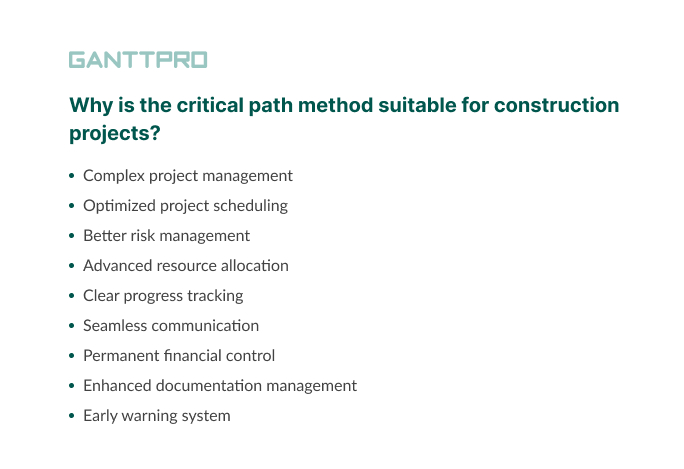
- Complex project management. The critical path method in construction is particularly effective for managing complex construction projects with numerous interdependent tasks.
- Optimized project scheduling. CPM in construction helps identify the longest sequence of tasks that must be completed on time to prevent construction project delays. It allows managers to ensure timely work completion.
- Better risk management. By highlighting important activities, the critical path method construction managers use enables them to focus their attention on tasks that have the most significant impact on project timelines. It helps in risk assessment and mitigation planning.
- Advanced resource allocation. CPM in construction assists in resource allocation by showing when specific resources are required. It helps avoid asset bottlenecks and overallocation and improves resource management in construction.
- Clear progress tracking. The critical path method in construction provides a convenient visual representation of project timelines, making it easier to track progress and compare actual vs. planned schedules.
- Seamless communication. A CPM chart is easy to understand and share. It makes it a valuable tool for communication among project stakeholders, including clients, contractors, and team members.
- Permanent financial control. By identifying critical activities, CPM in construction management helps control project finances. Delays in critical tasks can lead to increased costs due to resource overruns or penalties for missed deadlines.
- Enhanced documentation management. The method aids in documenting project schedules and responsibilities. It is particularly important in the construction industry where regulatory compliance and safety standards are crucial.
- Early warning system. CPM in construction management allows for early identification of potential delays or issues. It enables proactive problem-solving and adjustments to a project plan.
The point that deserves special attention is how the critical path method can be useful for construction project time optimization.
How is CPM used in optimizing time in construction?
The critical path method construction specialists often use helps them optimize time by providing a framework for project planning and management.
As was already mentioned, CPM identifies the most crucial tasks that directly impact project completion. By focusing resources and attention on these critical activities, construction teams can reduce delays and ensure efficient progress. Moreover, CPM allows for the creation of a realistic project schedule by considering task dependencies and their interplay.
Furthermore, it enables project managers to identify potential bottlenecks and allocate resources accordingly, preventing resource overallocation or delays.
Amaël Olivier, the construction delay expert and founder of Orizo Consult, shares his thoughts on this matter:
A critical path is such a useful tool because a delay to any activity along this critical path – a critical activity – is directly related to delaying the project completion date.
From the theory, let’s move on to the steps for identifying a critical path.
How to create a critical path in construction
Finding a critical path using a tool with a dubious reputation is not a good idea. Therefore, construction project managers always look for the best project management software solution that will streamline the related process.
By the way, the global construction management software industry doesn’t show any signs of withering away. It was estimated to be worth $9.3 billion in 2021 and is projected to reach $23.9 billion by 2031.
One of the best tools that automates the critical path method process with ease is GanttPRO.
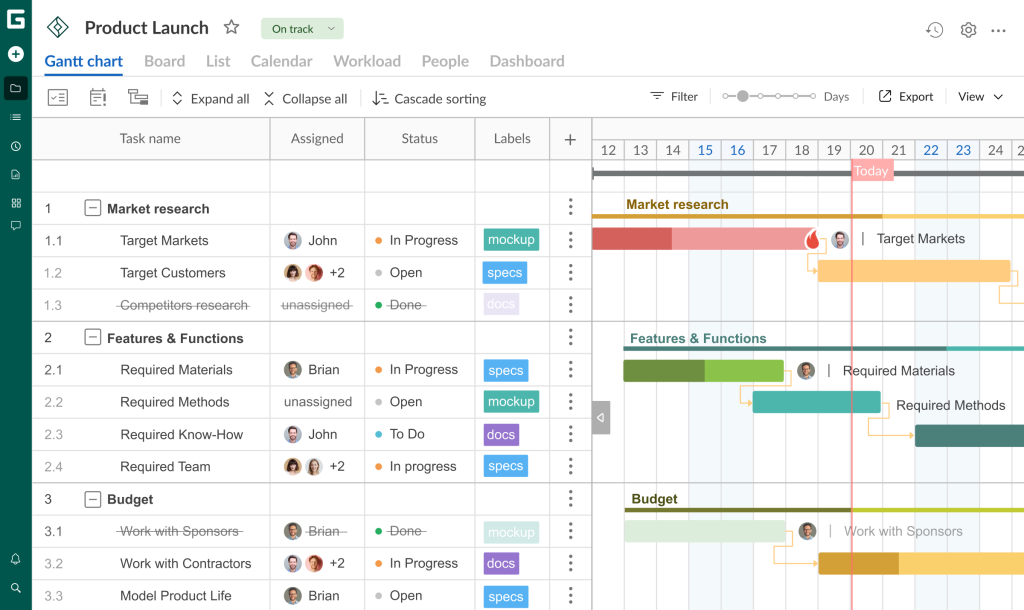
The software comes with professionally designed Gantt chart elements and features that allow construction specialists to apply the CPM method and generate their own stunning critical path examples with a couple of clicks.
This is appreciated by many experts and construction professionals.
For example, George Rossle, a production manager at A+ Construction Pro assesses the role of the online Gantt chart creator as follows:
For us, GanttPRO is a basic tool for planning and management. We use the software for deadline management and time tracking, file sharing, and smart scheduling.
It is worth noting that this tool is equally useful for different types of construction projects as well as enhancing teamwork. With its help, construction PMs can oversee several projects simultaneously without resorting to additional tools.
The software perfectly suits remote workers. It is especially important for large international construction companies.
GanttPRO mobile apps are available for iOS and Android. They allow construction teams to always be aware of their project events, regardless of their location.
Construction teams use GanttPRO to identify the most essential tasks that impact their projects and apply the critical path method, recognizing it as reliable critical path software.
Now, with a total understanding of the functionality and opportunities of GanttPRO, we can move forward and explore the basic stages that are necessary to start the process of using the critical path method in construction.
To find CPM, you need to go through the following steps.
1. Create a project
If you’ve collected a lot of ideas, discussions, and drafts regarding your future construction project, then it’s time to transfer them from your head to a convenient online tool.
It will take a few clicks to create a new project in GanttPRO.

The example we will consider here is related to the planning and construction of a new college campus. This project has some essential characteristics, including:
- Lots of tasks and subtasks.
- Short time for construction work (less than a year).
- Big construction team.
- Involvement of contractors and subcontractors.
- Large budget.
Once your project is created, it’s time to move on to turning ideas and thoughts into real tasks.
2. Put your tasks on a Gantt chart based on a WBS
Now you can transform your list of ideas into a structured set of actionable tasks. They’ll automatically appear on your timeline, allowing you to see the whole project at once.
Consider both the start and end dates for each task, along with its expected duration. If necessary, identify task predecessors.
Building the objects within the college campus project will involve intricate and lengthy tasks. It’s recommended to use a work breakdown structure (WBS), considering a predefined task hierarchy.
There are many work breakdown structure benefits but its key strength is that it breaks down complex projects into manageable and well-defined chunks, making it easier to plan, assign responsibilities, and track progress.
Luckily, GanttPRO is also known as a professional WBS creator. Of course, you could build a WBS in Excel or any other tool. However, the strength of GanttPRO is precisely that it allows for carrying out all the important project procedures and processes in one spot.
GanttPRO helps to plan, manage, and complete complex tasks, highly assisting construction teams that need professional and multifunctional construction project management software.
After that, you can assign tasks to your construction team members. It’s also valuable to estimate the time needed to complete all project tasks and activities. You can measure this in days, weeks, months, or even years.
Below you can see a timeline with tasks, subtasks, and work breakdown structure examples.
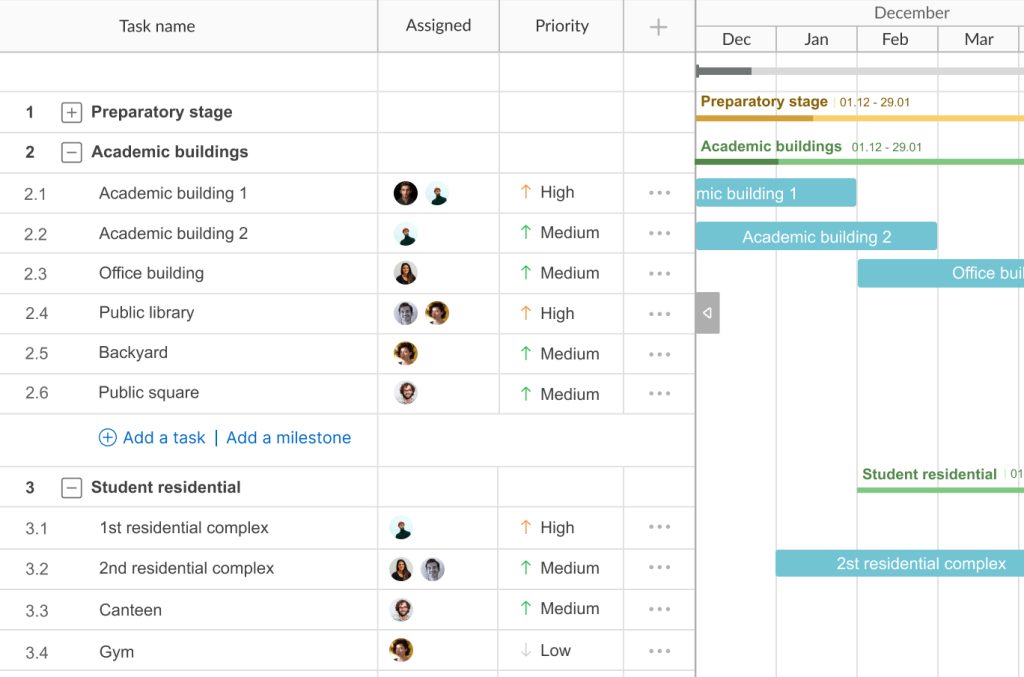
Our project includes the following set of parental tasks:
- Preparatory stage activities.
- Work on academic buildings.
- Work on the student residential construction.
- Acceptance of all facilities.
- Interior decoration.
- Furniture.
All of these tasks are divided into smaller subtasks with their own characteristics.
At the next stage, you need to determine the relationships between these activities as well as their key parameters.
3. Organize task dependencies and add milestones
The next step in the CPM process is establishing task dependencies.
As previously stated, there can be predecessor relationships in your critical path construction. It means that your project has activities that cannot start unless others have been completed.
To precisely define these activities and their interconnections, you need to take note of the following for each activity on the list:
- Identify tasks that precede the initiation of other tasks.
- Establish tasks that should be completed at the same time as the particular task.
- Determine tasks that should follow after each task.
In GanttPRO, you can use the drag & drop feature to show which tasks are dependent on other activities.
After that, you can mark the most important task (or several) that requires special attention. It is typically called a milestone in project management.
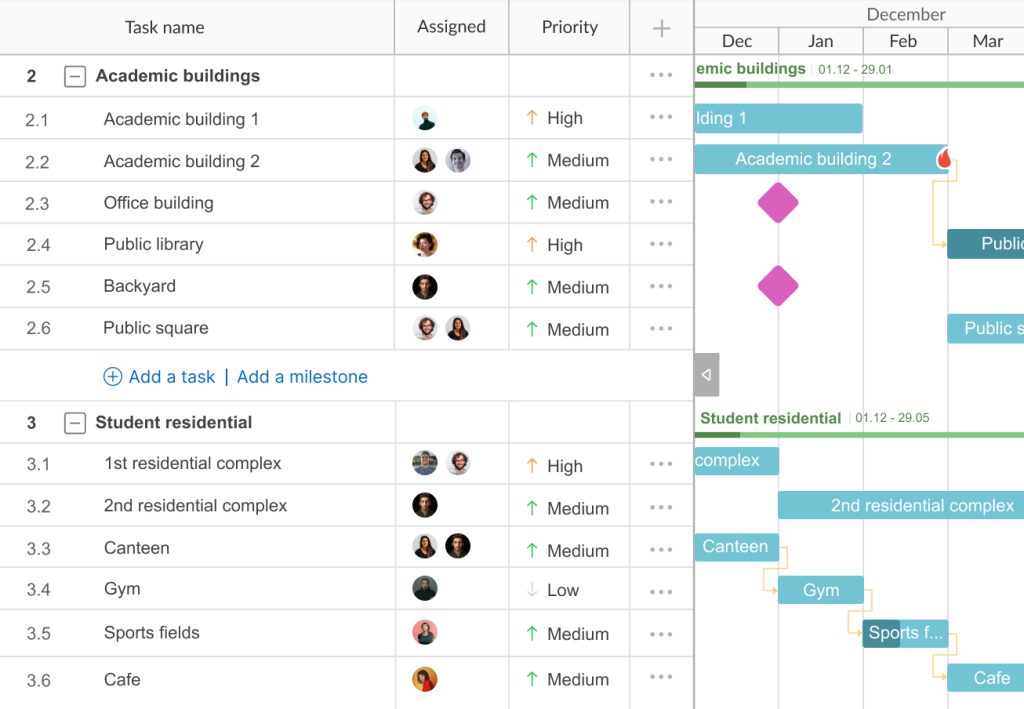
4. Visualize a critical path
With the identified tasks and their dependencies in hand, you can generate a critical path construction chart.
To find a critical path, managers need a handy network diagram to view their projects broken down into separate tasks.
They apply various diagrams with boxes and arrows to visualize their activities and dependencies.
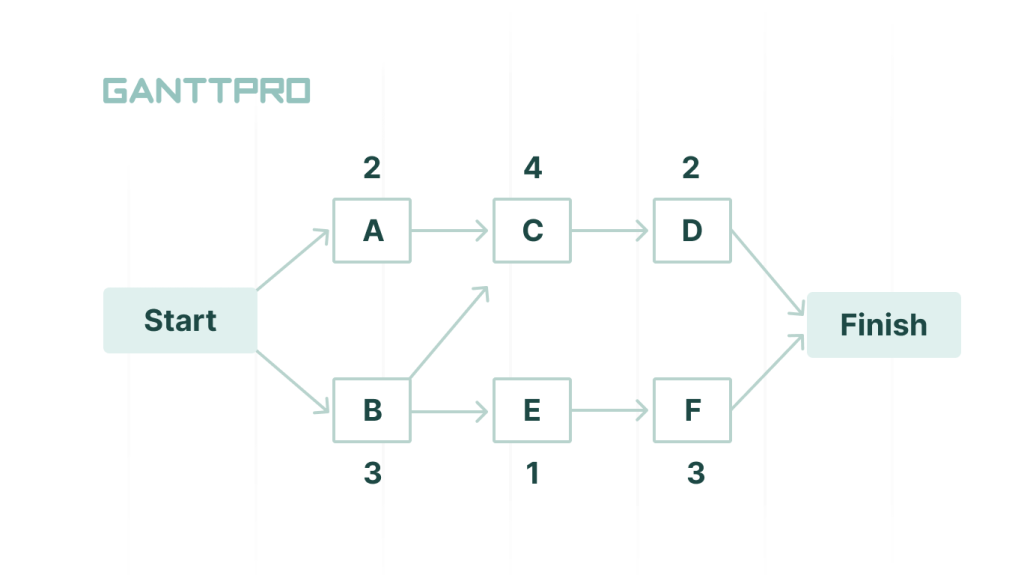
It is important to estimate the time required to complete all activities.
Usually, to identify a critical path, teams determine the main parameters of their tasks:
- ES – the earliest start time. It is when a task can start once the previous dependent tasks are completed.
- EF – the earliest finish time. It is the period required to complete a task.
- LF – the latest finish time. It is when a task may be completed without any delays.
- LS – the latest start time. It is the period required to complete a task.
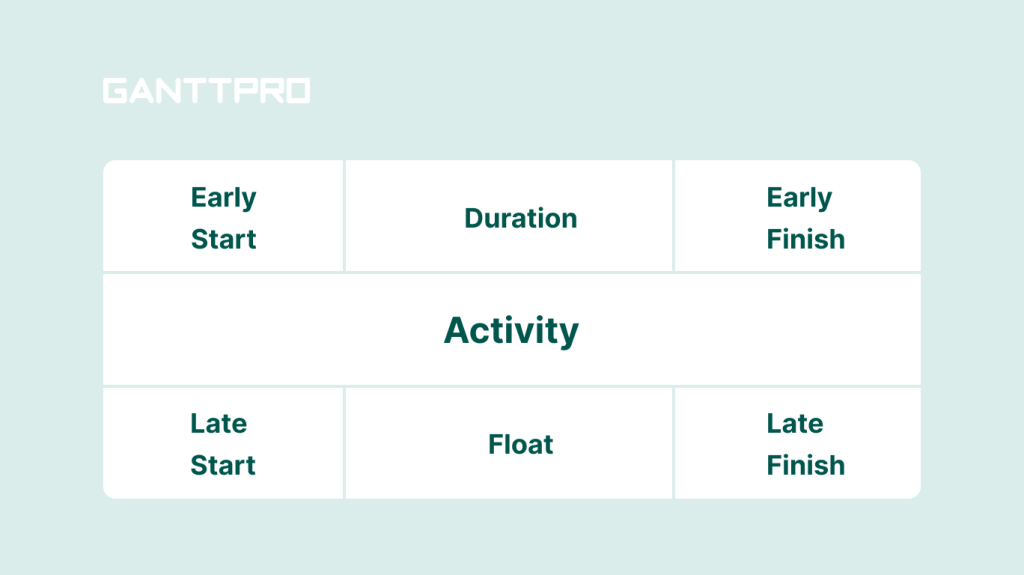
It’s worth paying attention to the float time between ES and LS or between EF and LF. During this period, a task can be delayed without delaying the finish date of the project.
This kind of diagram helps to identify the longest path of any activity and the longest sequences.
If you aim to accelerate your project, you should reduce the time for the tasks within a critical path.
In GanttPRO, you can visualize a critical path in seconds.
All you need is to click on a special sign in the top left corner.
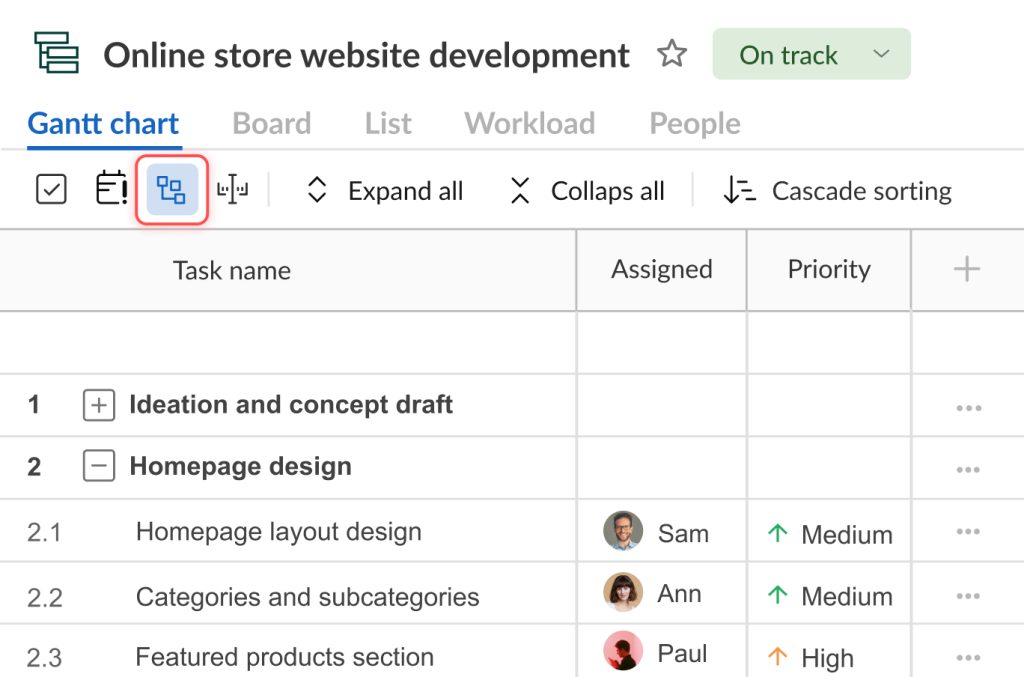
This chain of important tasks will be shown in red.
Remember that you need to estimate the duration of each task in order to use the critical path method.
After the above steps, your project timeline with a critical path will get the following view.
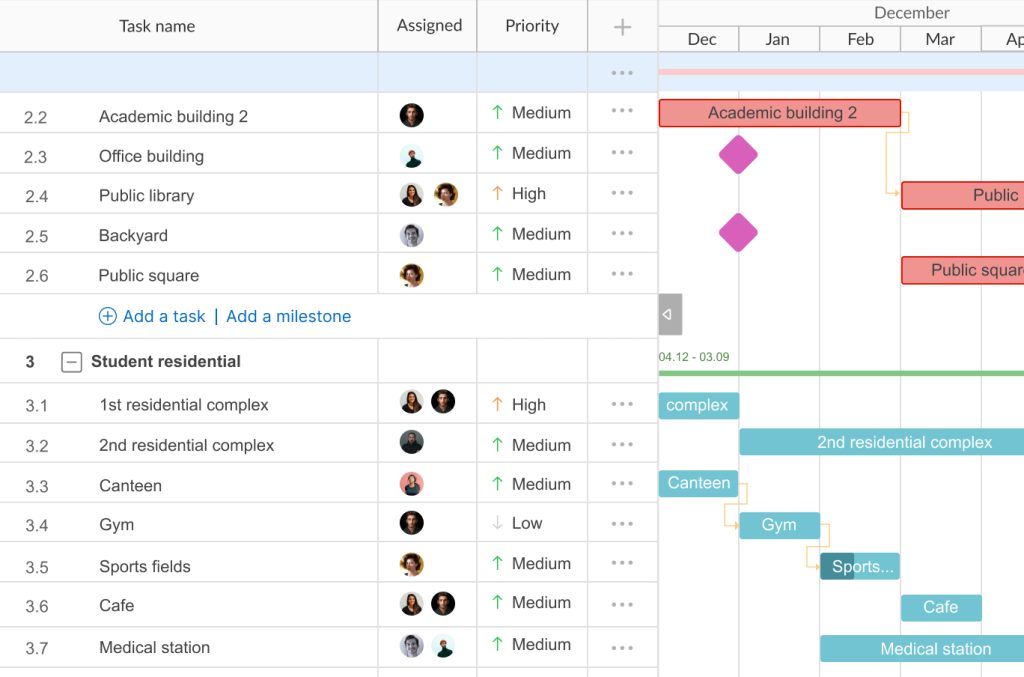
5. Update your timeline and report on progress
It’s important to update your chart to have a chance to recalculate a critical path.
You should also care about reporting, which is vital to pull data from your project and get and share insights into how it’s doing. Detailed reports will provide a snapshot of the performance of the entire work.
After these consequent steps of creating a critical path in construction, you’ll have a more realistic view of your project and a guarantee to meet your deadlines.
Take advantage of the critical path method in construction and lead your projects to success
CPM in construction project management is not something difficult. Whether you are a project manager or a construction team member, it’s important to know which tasks in your project are critical to its completion. If delays or other changes that affect these critical tasks are made, you can quickly identify potential effects on the whole project timeline.
There is no need to perform manual calculations to determine a critical path, as you can find and visualize it in seconds with the right construction project management software, such as GanttPRO.
Use its power to create thorough and accurate schedules and be sure that everything goes according to your construction plan.

Professional project management software
Apply the critical path method on a handy Gantt chart.
Sign up for freeFrequently asked questions about the critical path method in construction
-
The critical path method in construction is a scheduling technique that identifies the longest path of logically dependent and connected activities that it takes to reach the end of the construction project. It highlights the most crucial tasks that, if delayed, could impact the project’s overall timeline.
-
The CPM critical path method in construction is a project management technique used to schedule and manage complex projects efficiently. It identifies the essential sequence of tasks that must be completed in order to ensure the project’s timely completion. Within this method, a critical path represents the shortest duration in which the project can be accomplished. By focusing on these important tasks, project managers can allocate resources effectively and identify potential delays, aiding in on-time project delivery.
-
CPM and PERT (Program Evaluation and Review Technique) are project management tools commonly used in construction. CPM emphasizes identifying the essential sequence of tasks and their durations to determine a critical path, which represents the shortest time required for project completion. On the other hand, PERT incorporates uncertainty and variation in task durations, allowing for a probabilistic analysis of project completion times. It considers best-case, worst-case, and most-likely scenarios, offering a more comprehensive view of project timelines.
